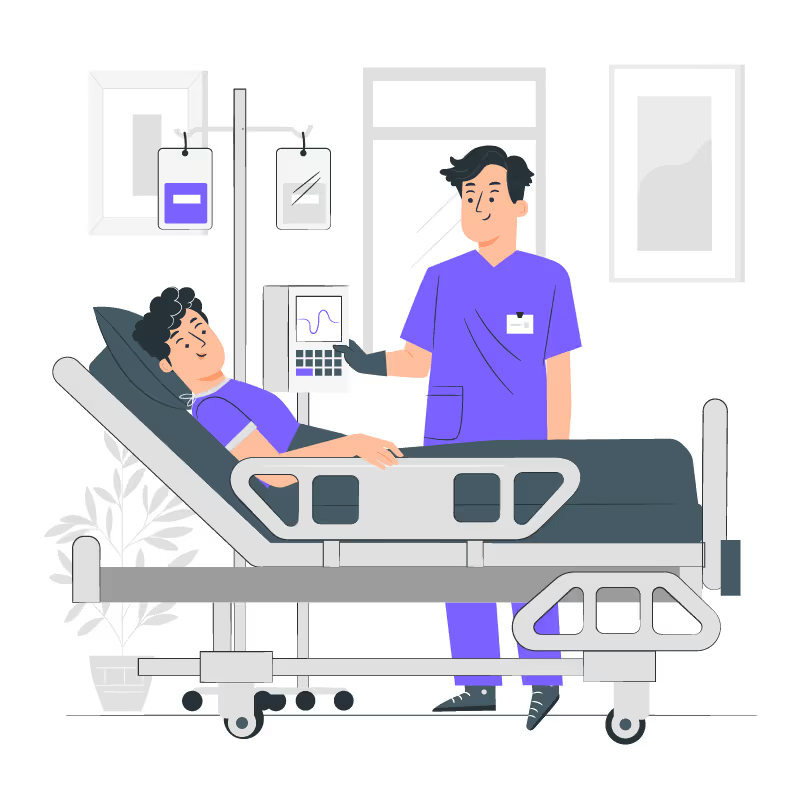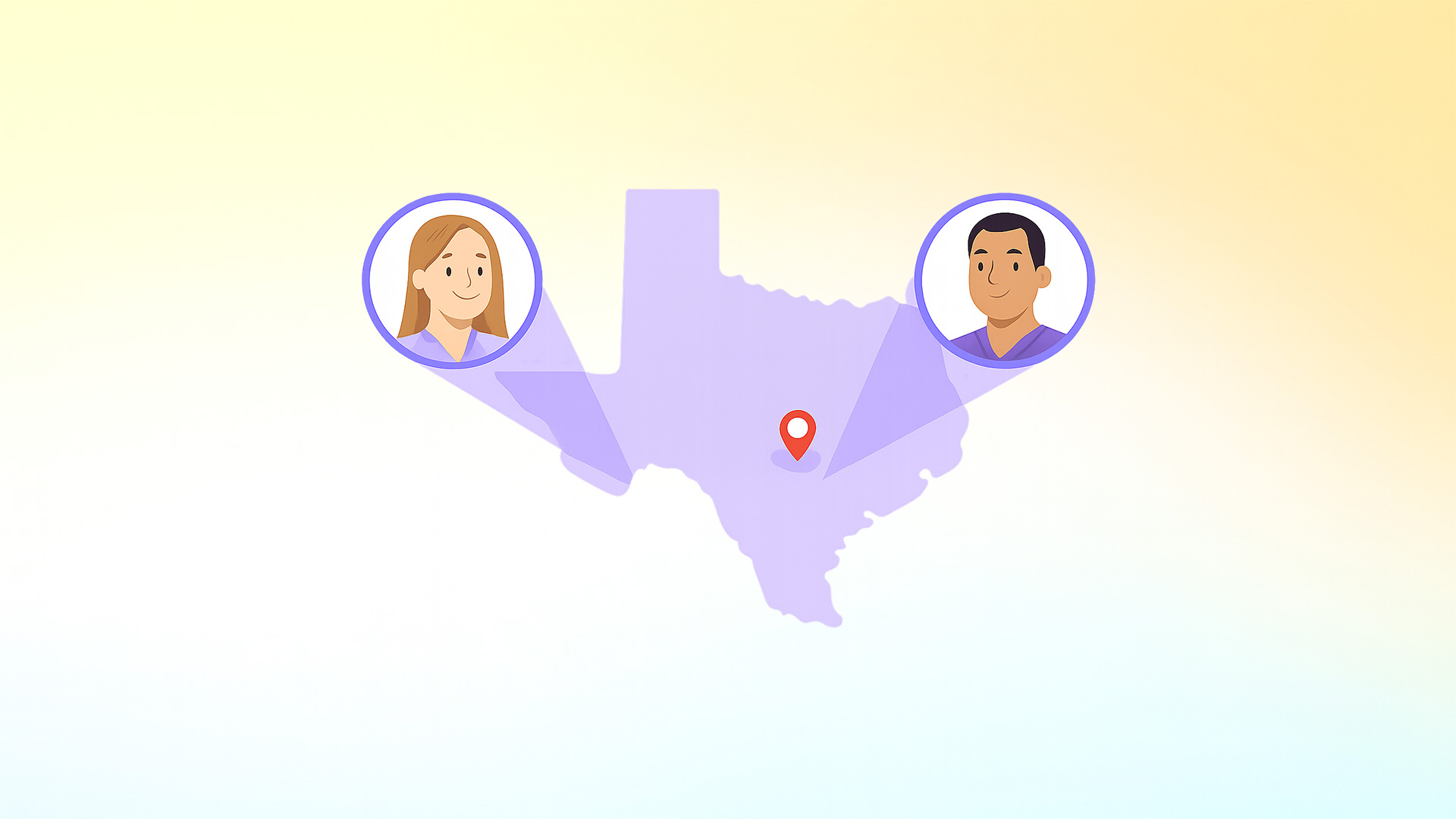One of the biggest challenges for nurse practitioners is facing the lack of independent practice, which affects their ability to function as independent practitioners. We all know that. But this issue stems from an even bigger issue: the fact that the NP’s scope of practice is not always clearly defined.
“Scope of practice” is just a fancy way of saying “what advanced practice registered nurses (APRNs), including nurse practitioners, can and can’t do.”
As you advance in your career, you’ll find that there are some issues with your ability to practice that might get you in trouble. This problem affects all nurse practitioners.
This blog will try to explain why these issues arose, and what you can do about them. To understand this topic in the best way possible, we’ll need to start with a little history.
Being aware of your scope of practice is an essential part of being a nurse practitioner today. You can’t go to work without knowing your rights and responsibilities, so let’s dive right in!
How Advanced Practice Registered Nurses First Came to Be
Here’s a question for you. Something that you might or might not have learned in NP school.
Who was the first nurse practitioner?
It’s okay if you don’t know the answer. The truth is, there’s a chance nobody really knows for sure. In the United States, the term “nurse practitioner” has been in use since the 1960s. It initially described nurses who were taking on certain medical tasks due to a shortage of primary care physicians.
In 1965, at the University of Colorado, American nurse and Living Legend Loretta Ford came up with the first nurse practitioner program. This program focused on pediatrics, so that’s something PNPs can definitely brag about with their colleagues. This laid the groundwork for pediatric nurse practitioners (PNPs).
The American Association of Nurse Practitioners (AANP) has played a significant role in defining the scope of practice and responsibilities for nurse practitioners since its inception.
Mrs. Ford turned 100 years old on December 28th, 2020 (and she’s still working!). Her centennial coincided, as you may have figured out, with the 200th birthday of Florence Nightingale, which made 2020 the Year of the Nurse. How awesome is that?
In 1979, she predicted that NPs would grow to become nurses “for all settings.” She had a concrete vision for the future of nursing, a future where nurses could practice within four tenets: assess, treat, diagnose, and evaluate.
That was the beginning of what we now refer to as “scope of practice.”
Was Loretta Ford right in her predictions? Are NPs capable of assessing, treating, diagnosing, and evaluating patients in “all settings”?
The answer is both yes and no. Let’s take a closer look.
Scope of Practice: Where Everything Began
Mrs. Ford didn’t develop the first NP program all on her own. She collaborated with Dr. Henry Silver (1918-1991), a pediatrician, to bring it to fruition.
As nurse practitioners, we owe a lot to both Ford and Silver. Together, they came up with a way to marry the traditional role of the nurse (patient education, health promotion, bedside, etc.) with advanced, specialized medical training (treatment, diagnosis, etc.)
This approach to patient care, however, was not well received by both the medical and nursing communities. The discussion about the NP’s scope of practice started just as soon as the first NP graduates left the school to start their careers. This collaboration marked a significant shift in nursing practice, blending traditional nursing roles with advanced medical responsibilities.
One of the main points of debate was the relationship between NPs and physicians. Some sources mention that Mrs. Ford’s colleagues were a little preoccupied with the fact that she was working so closely with Dr. Silver
They thought that, because of this precedent, their program would only create nurses that were supervised by physicians all the time, instead of being regarded as colleagues. Sadly, they were right. Every NP can attest to that.
This was the root of the issue when it came to an NP’s scope of practice, the idea that nurses were not able to do medical work by themselves. They were even debating if NPs should be allowed to use stethoscopes.
The nurse practice act in various states played a significant role in defining and limiting the scope of practice for nurse practitioners.
The dilemma between NPs and physicians eventually led to other concerns: can NPs prescribe medication? Can they do certain medical procedures? Will they ever “replace” physicians? You’ve probably heard these questions before.
The onus was on nurse practitioners to prove themselves to the world, and they’ve been trying to do that since the very beginning. Let’s look at the results of those early efforts.

Defining Scope of Practice
Scope of practice refers to the professional activities that each state authorizes nurses or other clinical staff to perform. For nurse practitioners (NPs), understanding their scope of practice is crucial as it varies significantly from state to state. This scope is determined by a combination of education, training, experience, and state regulations.
According to the American Nurses Association (ANA), scope of practice encompasses the services a qualified health professional is deemed competent to perform and permitted to undertake, in keeping with the terms of their professional license. Essentially, it defines what nurse practitioners can and cannot do within their professional roles, ensuring they provide safe and effective patient care.
How we got to where we are now
In 1974, the American Nurses Association established the Council of Primary Care Nurse Practitioners. The Council is no longer a thing, but its creation gave us the first description of an NP’s duties, helping to bring more attention to the role
This first attempt at describing the NP’s scope of practice created an early standard that NPs and physicians could follow to start thinking about what an NP could and could not do.
However, the Council’s description was unsuccessful in uniting every NP under one banner, especially when the profession started expanding to include different specialties.
The following decades saw the growth of nurse practitioners as post-graduate professionals. The early NP programs began as simple certifications, but they were also expanded and improved to become Master’s Degree programs.
This change helped to legitimize NPs, but it wasn’t enough to clearly define their scope of practice. There were advancements at the federal level, but because there wasn’t a standard, each state started to regulate nurse practitioners in their own particular way.
Eventually, this led to more confusion. In the 1980s, some states started to adopt measures that would broaden the scope of practice of a nurse practitioner. That helped a little with the issue of independence, but it didn’t help the case for a unified scope of practice.
One of the most important breakthroughs came almost 30 years later, in 2008. This is when the Consensus Model for APRN Regulation was first established.
The Consensus Model did advance the cause for a better understanding of the NP’s scope of practice, but it didn’t solve everything. In fact, the Model itself states that the scope of practice needs to be constantly improved and redefined with better information, and this is something that’s still going on today.
The Consensus Model also emphasizes the importance of focused practice competencies in ensuring that nurse practitioners are well-prepared for their specialized roles.
The evolution of NP roles has always emphasized the importance of clinical practice, ensuring that nurse practitioners are well-equipped to provide specialized care.
How to figure out your nurse practitioner's scope in 2025
So, with all of that in mind, how do you know (as a nurse practitioner) where your scope of practice begins and ends? Who do you turn to?
Well, the Consensus Model is a great resource to start figuring that out for yourself. As noted above, it’s constantly evolving, as its main goal is to eventually become the countrywide standard for NP practice. Reading up on that is a great way to keep yourself updated.
Professional organizations, such as the association of nurse practitioners, provide valuable resources and guidelines to help NPs understand their scope of practice.
Click here to see a PDF version of the model.
Nevertheless, you’ll still have to turn to your local state laws, and your Board of Nursing, to find out what you can and can’t do. You’ll find that every state has a varying definition of what a nurse practitioner even is.
If you want the latest definition of the NP’s scope of practice, here’s the one provided by the AANP, which follows the Consensus Model:
NP practice includes, but is not limited to, assessment; ordering, performing, supervising and interpreting diagnostic and laboratory tests; making diagnoses; initiating and managing treatment including prescribing medication and non-pharmacologic treatments; coordinating care; counseling; and educating patients and their families and communities.
This definition is very comprehensive, but it doesn’t necessarily apply to all nurse practitioners in every situation. It’s just a guide.
Again, your best bet to avoid problems in your career is to become familiar with your state laws, as well as resources provided by your state’s board. Here are two resources that can help you with that:
- The AANP’s State Practice Environment webpage.
- This handy (and interactive) scope of practice chart by Barton Associates.
These are just two examples of the many websites out there that will help you get a better sense of your limits and rights as a nurse practitioner.
What about your particular specialty? Does it affect your scope of practice?
Your specialty does affect what you can and can’t do, and it’s important to be aware of the standards for practice that certain organizations have established.
The ANCC provides specialty-specific resources to learn about your scope of practice in their Scope of Practice webpage. Scroll down to about half of the page to see them.
One of the points of agreement between most nursing organizations that try to define scope of practice is the fact that the NP should practice only within their given specialty. Here’s an example rule by the Arizona Board of Nursing, from a whitepaper they published in 2009:
A primary care NP may have a role in assisting or directing management of the acute care patient as long as the aspect of care is within the limits of their specialty and role of nurse practitioner certification.
What this is trying to say is that primary care NPs can help with acute care patients, but there are limits to what they can do because their specialty is not entirely set to provide acute care.
In fact, you should also consider that previous experience as an RN does not count towards your scope of practice as an NP. If you worked in an ICU as an RN, that doesn’t mean you can do the same job as an FNP, for example. Even if you have the means.
The focus of your specialty determines your patient population, which in turn determines your current scope of practice. This is very important.
Being a qualified health professional means having the necessary education, training, and licensure to perform specific healthcare services within one's specialty.
Here’s a great paper on scope of practice that you should read to get a better understanding.

Practice authority and autonomy
Practice authority and autonomy are critical components of an NP’s scope of practice. In states with full practice authority, nurse practitioners can perform the full range of their professional activities without the need for a supervising or collaborating physician. This includes diagnosing and treating patients, prescribing medications, and managing patient care independently.
Conversely, reduced practice states impose certain restrictions, such as requiring NPs to have a collaborative agreement with a physician to prescribe medications. In restricted practice states, NPs must work under the supervision of a physician for all aspects of their practice. Understanding the level of practice authority in their state is essential for NPs, as it directly affects their ability to provide care and operate their own practices.
Interprofessional and collaborative responsibilities
As licensed, autonomous practitioners, nurse practitioners play a vital role in patient care, both as team leaders and collaborative members. NPs work closely with other healthcare professionals, patients, and families to deliver comprehensive, patient-centered care. They are responsible for accurate documentation of patient status and care, facilitating shared decision-making, and involving patients and families in healthcare decisions.
Additionally, NPs recognize the importance of continued education through professional development and staying current with evidence-based practice. Participation in quality improvement initiatives and ongoing professional development ensures that NPs provide the highest standard of care and contribute to positive patient outcomes.
State laws and regulations
State laws and regulations play a pivotal role in defining the scope of practice for NPs. Each state has its own nurse practice act, which outlines the limits and authority of nurse practitioners within that state. These laws can significantly impact an NP’s career, as they dictate what procedures and responsibilities an NP can undertake independently or under supervision.
Even if an NP is educated and trained to perform certain tasks, state regulations can further restrict their practice. Therefore, it is essential for NPs to be well-versed in their state’s nurse practice act and stay updated on any changes to ensure they are practicing within legal boundaries.
Putting it all together
To summarize, NPs have had trouble defining their scope of practice since the 1960s, when everything began. A lack of standardization led individual states and nursing organizations to propose their own regulations, which led to our current situation.
This lack of standardization probably came mainly from the fact that Loretta Ford and Henry Silver tried to combine the role of the nurse with certain characteristics of the role of the physician. It wasn’t a bad idea, but it also wasn’t easy to implement.
Collaboration among various health care providers, including nurse practitioners, is crucial for improving patient outcomes. Initiatives like the Coalition for Patient's Rights aim to enhance patient access to a diverse range of health care providers and the comprehensive services they offer.
If you want to understand your scope of practice, you have to consider your state’s laws, what your state’s Board of Nursing has defined as allowed practice, and your patient focus (specialty).
There are many resources out there for you to get a grasp of your own scope of practice, and even more resources for you to figure out if you’re venturing outside of your realm.
As a bonus, here’s a great one: the Scope of Practice Decision-Making Framework. This resource is from 2015, and it was created by a large coalition of nursing organizations. It serves as a guide for you to determine whether a certain action or procedure is allowed in your case.
After reading this blog, you might be a little disappointed in the present state of affairs, that’s understandable. It really shouldn’t be this complicated.
However, we do believe that someday all NPs will be able to practice with more confidence, protected by a standard of practice that serves every specialty. It’s only a matter of time.
In the meantime, keep on practicing, keep on learning, and always be proud of the path you’ve chosen.

Follow us on social media and feel free to contact us for any questions and requests:
Facebook: https://www.facebook.com/NPHubOfficial/
Instagram: https://www.instagram.com/nphub_
LinkedIn: https://www.linkedin.com/company/np-hub/posts/?feedView=all
TikTok: https://www.tiktok.com/@nphub_
Join our new FREE Facebook group for exclusive updates on new preceptors and promo codes here:
Find a preceptor who cares with NPHub
Book a rotation.webp)








.webp)


.webp)



.webp)